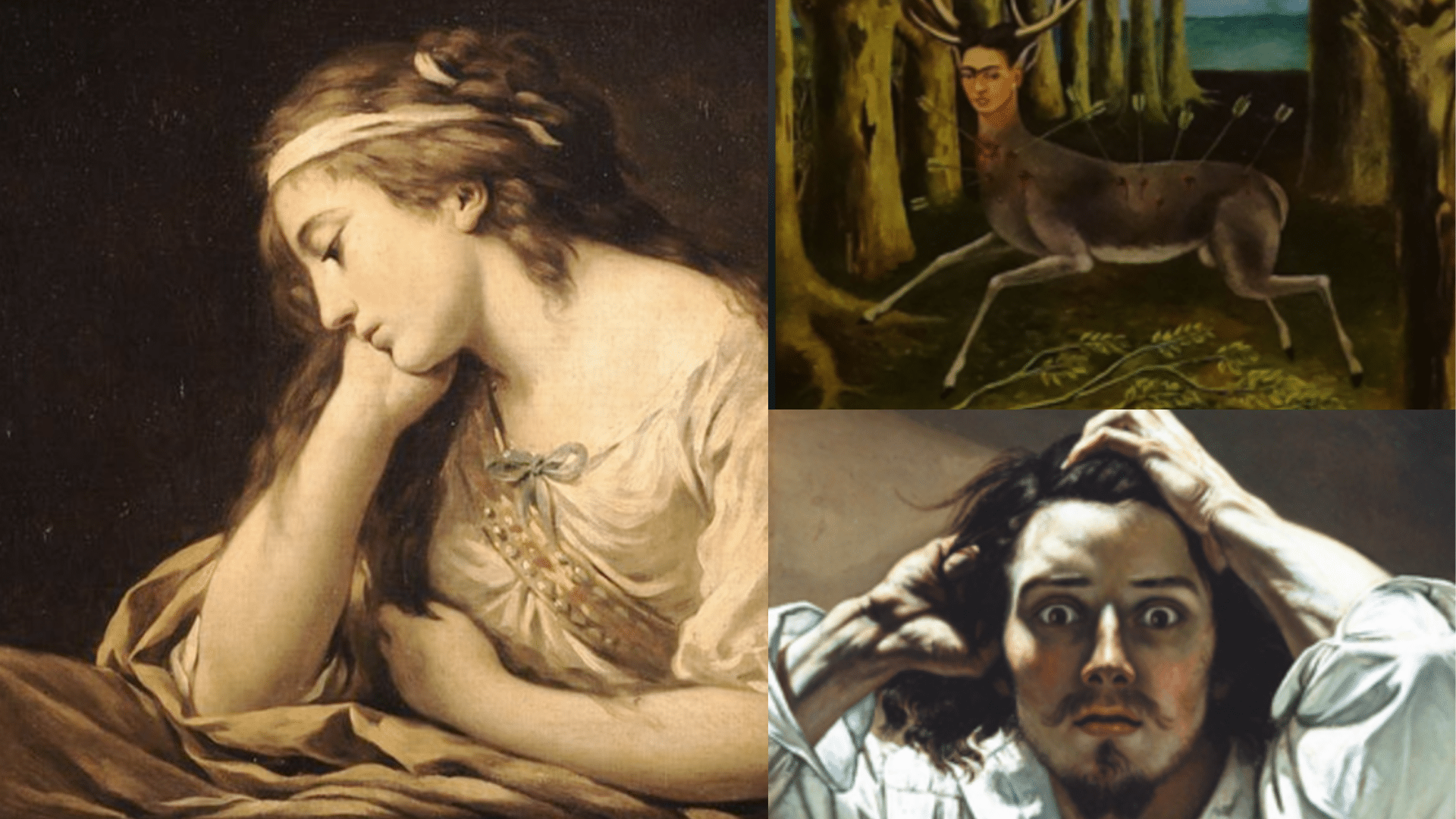Ever stared at a painting and felt tears well up? You’re not alone.
Art has this special way of reaching right into our hearts. Sometimes a single brushstroke can say what words never could. When life gets tough, artists have always turned to their canvas to work through the pain.
These paintings don’t just hang on walls looking pretty. They tell stories. Stories about loss, loneliness, and those heavy feelings we all carry sometimes. The artists who made them understood something important: sadness isn’t something to hide from.
Throughout history, painters have captured moments of deep emotion. Their work reminds us that feeling sad is part of being human.
Ready to meet paintings that will make you feel something? Each one has a story worth knowing. Some might even help you understand your own feelings better.
The Emotional Power of Sadness in Art
Sadness is different from other emotions in art. It makes us slow down and think. It asks us to face hard truths about life. Artists know that sadness, when painted well, creates the most powerful and unforgettable works.
History shows us something interesting. During times of great pain – wars, personal loss, or social problems – artists created their most treasured masterpieces.
These paintings tell the story of both personal and shared human suffering. From depression art with deep meanings to simple sketches, artists have found ways to express their darkest moments.
Art works like a mirror for our feelings. When we look at a sad painting, we’re not just watching. We’re having a conversation between our own experiences and what the artist felt.
Even sad drawings with deep meaning can connect us to emotions we thought were impossible to share.
This is why certain sad paintings speak to people across different cultures and time periods. Loss, loneliness, and unfulfilled dreams are feelings everyone understands.
1. St. Jerome in his Study by Candlelight by Aertan Van Leyden (1520)
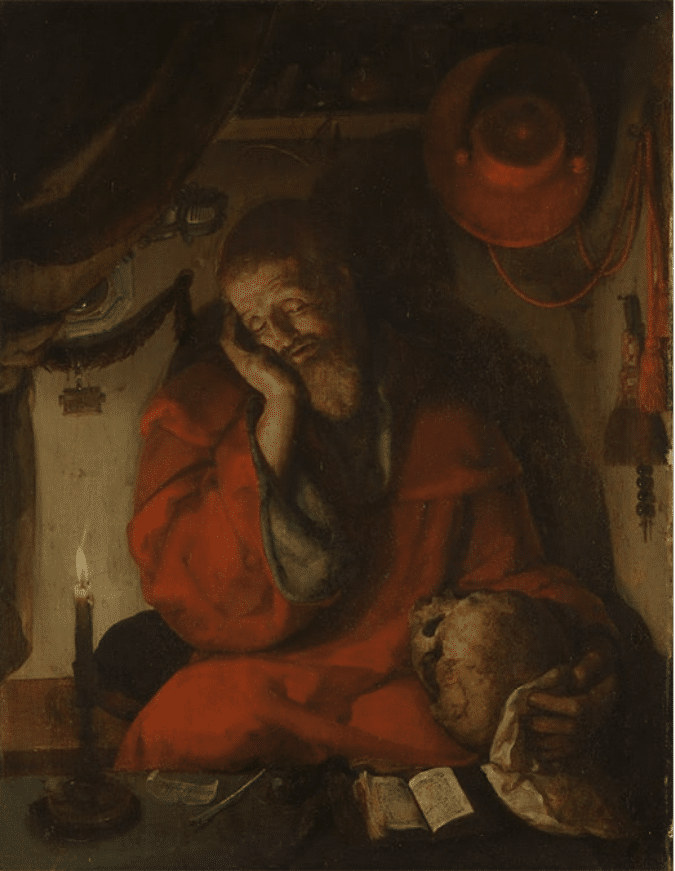
Artist: Aertan Van Leyden, Dutch Renaissance painter
The candlelight flickers across Jerome’s weathered face as he hunches over ancient texts, completely alone in the darkness.
His shoulders carry the weight of decades spent translating sacred words while life passed him by outside.
The single flame is all that stands between him and total darkness – just like his scholarship is all that stands between him and complete isolation.
You can feel the bone-deep exhaustion of a man who chose knowledge over love, duty over human warmth.
Saint Jerome gave everything to translate the Bible into Latin, but Van Leyden shows us the brutal cost: a brilliant mind trapped in crushing loneliness, wondering if anyone will remember his sacrifice.
2. La Melancolie by Louis-Jean-François Lagrenee (1785)
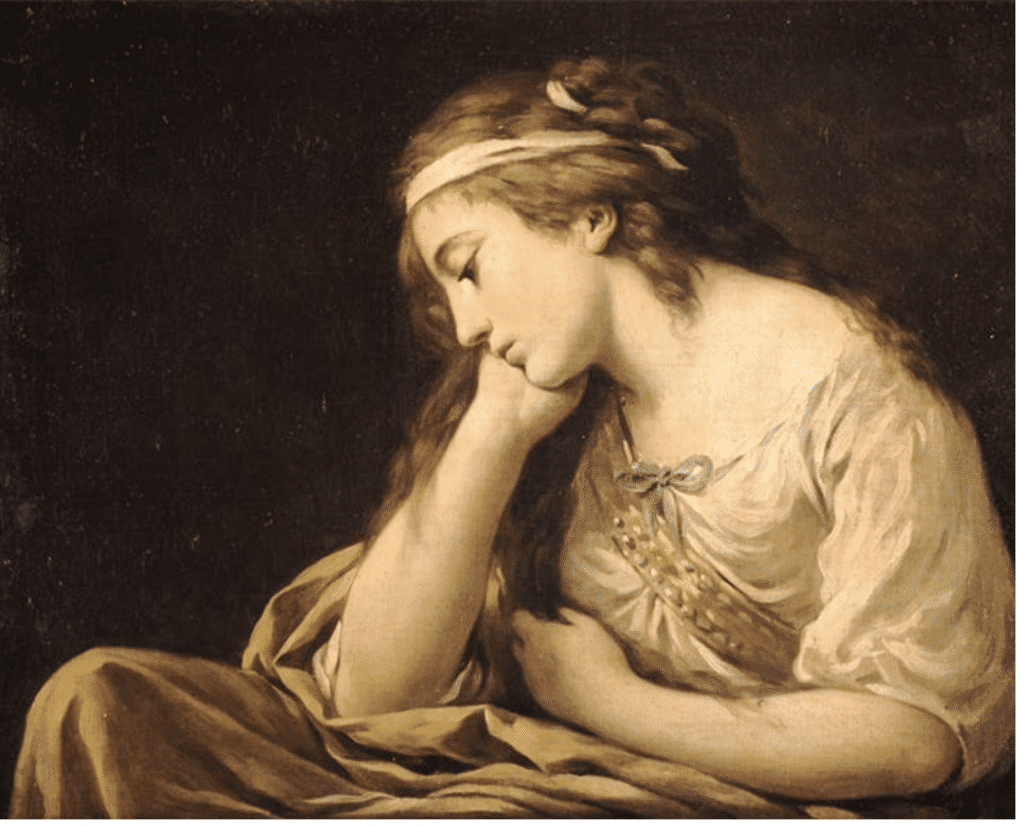
Artist: Louis-Jean-François Lagrenee, French Neoclassical painter
She sits with her head heavy in her hand, lost in a sadness so deep it’s become part of her beauty.
Her downcast eyes hold years of quiet suffering; not the sharp pain of fresh wounds, but the dull ache of dreams that never came true.
The soft light caresses her face like a gentle goodbye, making her sorrow look almost sacred.
During the 18th century, artists believed melancholy was the mark of a sensitive soul; this woman embodies the romantic idea that the deepest people are also the saddest.
3. Sorrow by Paul Cezanne (1869)
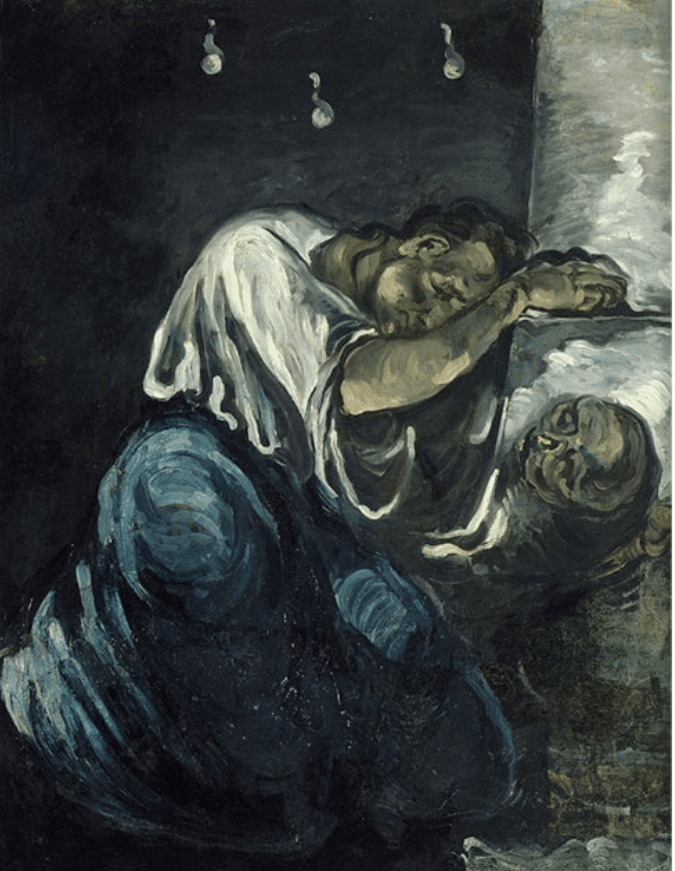
Artist: Paul Cezanne, French Post-Impressionist painter
Cezanne’s work expresses deep emotional weight through heavy brushstrokes and muted tones.
The paint feels angry on the canvas, thick and desperate, like Cezanne was trying to scrape his own pain onto the surface.
These figures don’t just look sad; they’re crushed, folded in on themselves like paper dolls someone stepped on.
Every brushstroke screams with frustration, the colors all muddy browns and grays that make your heart feel heavy just looking at them.
Cézanne painted this when he felt like a failure, rejected by the Paris art world and consumed by self-doubt, turning his canvas into a mirror of his own broken spirit.
4. L’Absinthe by Edgar Degas (1876)
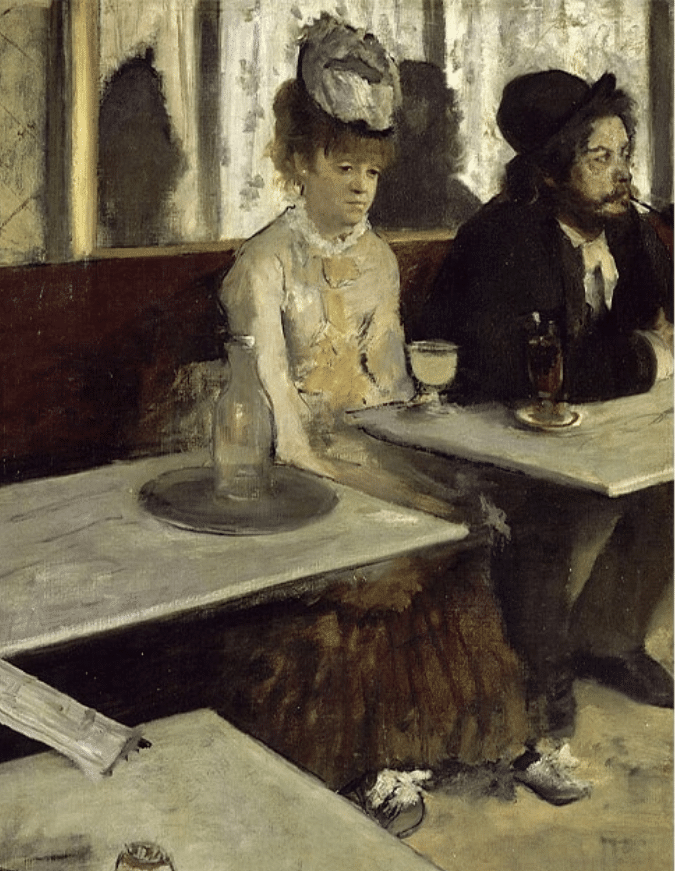
Artist: Edgar Degas, French Impressionist painter
Degas employs harsh artificial lighting and sickly greens to capture the alienation of modern urban life.
She stares into nothing while the green poison slowly kills her from the inside, surrounded by people but utterly alone.
The harsh café lights make her skin look sickly, her eyes empty as a doll’s. This is what rock bottom looks like – when you’re too numb to even feel sorry for yourself anymore.
Degas captures the special horror of modern city life, where people turned to absinthe to escape their loneliness but ended up more lost than ever, ghosts haunting crowded rooms.
5. The Sad Message by Peter Fendi (1838)
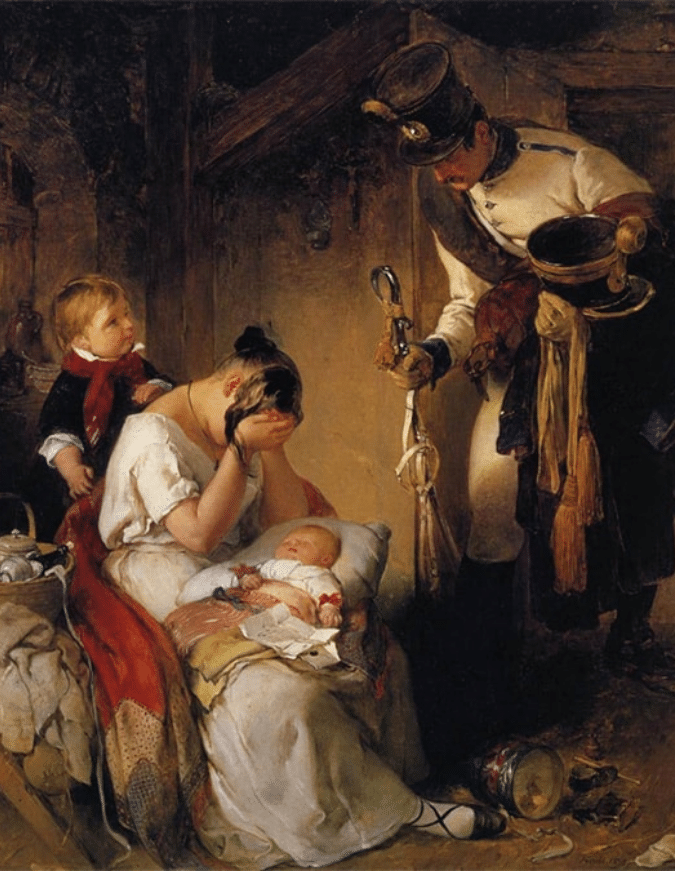
Artist: Peter Fendi, Austrian Romantic painter
Fendi captures the precise moment of devastating news through realistic detail and protective body language.
The letter slips from her fingers as her whole world collapses in a single moment – you can almost hear the paper hit the floor.
The way she cradles herself is pure instinct, the same way wounded animals curl up to protect their vital organs.
This was painted when wars tore families apart and bad news traveled by letter – imagine waiting weeks to learn if someone you loved was dead or alive, then having your worst fears confirmed in a stranger’s handwriting.
6. Les Saltimbanques by Gustav Doré (1874)
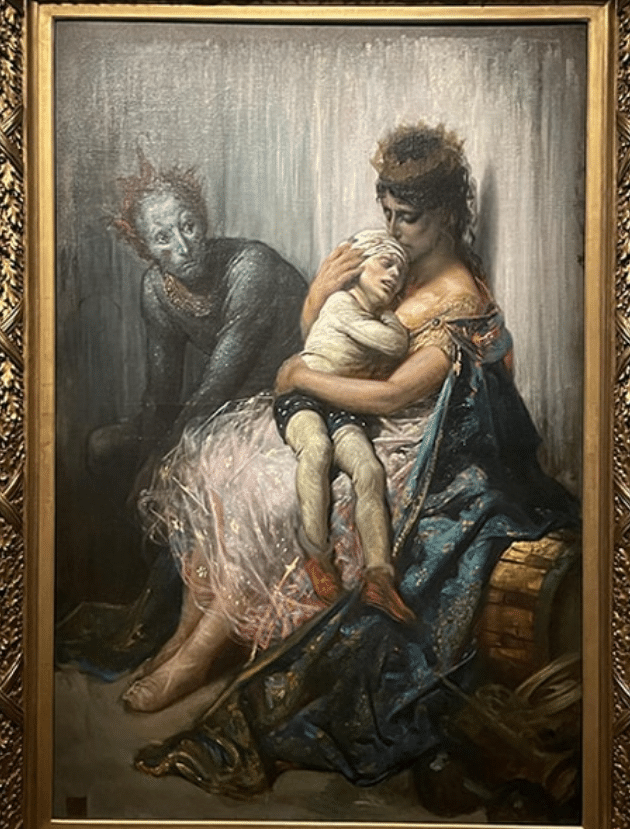
Artist: Gustav Dore, French artist and illustrator
Doré contrasts bright performance costumes with exhausted expressions to reveal the hidden cost of entertainment.
Behind the greasepaint and sequins, these circus performers are dying a little more each day, their real faces showing through the cracks in their painted smiles.
The bright costumes mock their exhaustion – like wearing party clothes to a funeral. These are people who make others laugh while their own hearts are breaking, who dance and juggle while hunger gnaws at their bellies.
Doré painted the traveling circuses filled with desperate people who had nowhere else to go, performing joy they’d forgotten how to feel just to survive another day.
7. Inconsolable Grief by Ivan Kramskoy (1884)

Artist: Ivan Kramskoy, Russian Realist painter
Kramskoy’s Russian realism presents grief without sentimentality or hope for comfort. This man has been hollowed out, carved empty by a loss so complete it rewrote his DNA.
He stands in his funeral clothes like a scarecrow, present in body but absent in every way that matters. The flowers around him might as well be plastic – nothing beautiful can touch him now.
Russian artists didn’t believe in pretty lies, and Kramskoy shows us grief in its most honest form: the kind that doesn’t make you stronger or teach you lessons.
It just leaves you fundamentally broken, learning to breathe around a hole in your chest that will never fill.
8. At Eternity’s Gate by Vincent van Gogh (1890)
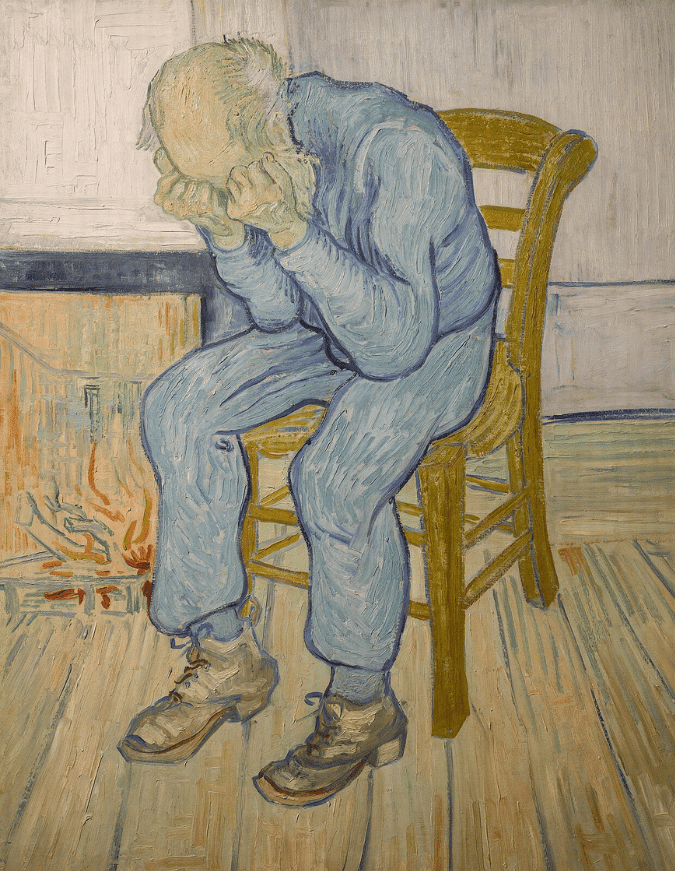
Artist: Vincent van Gogh, Dutch Post-Impressionist painter
Van Gogh channels his own asylum experience through dynamic brushwork that makes stillness feel desperate.
The old peasant sits by his dying fire with his head buried in his hands, and you can feel Van Gogh painting his own despair into every swirling brushstroke.
The colors should be warm, given the presence of a fireplace, but everything feels cold and abandoned.
This is what it looks like when hope finally runs out, when you’ve worked your whole life for nothing and death is the only rest left.
He painted this in the asylum, seeing himself in this forgotten old man, both of them wondering if anyone would remember their suffering when they were gone.
9. Femme Assise by Pablo Picasso (1902-1903)
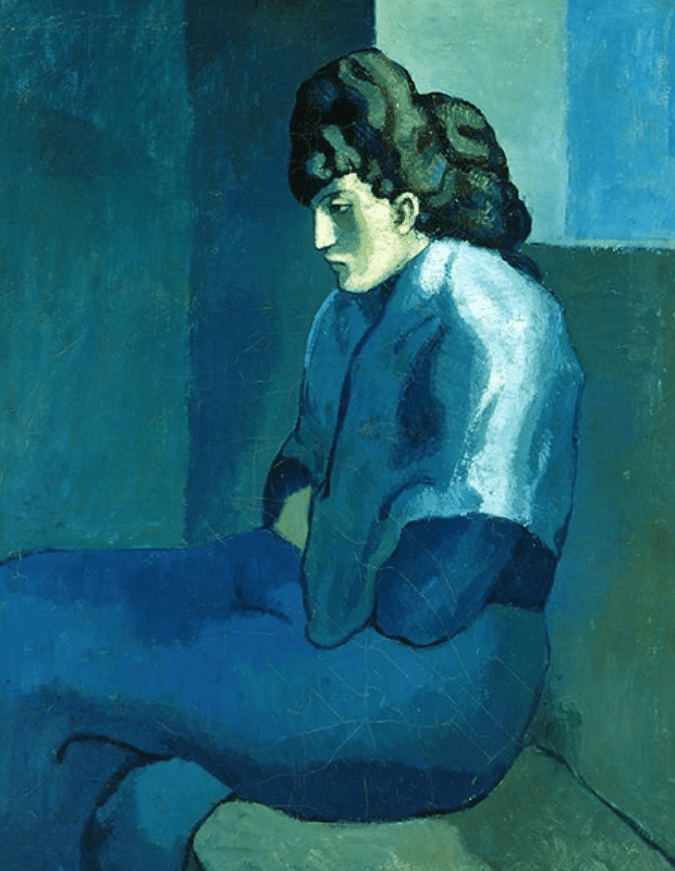
Artist: Pablo Picasso, Spanish painter during Blue Period
Picasso’s Blue Period strips away all warmth, using monochromatic blues to create a visual metaphor for depression.
Blue bleeds through everything like a stain that won’t wash out, turning this woman into a ghost of herself. She’s stretched thin as paper, fragile enough to tear if you touch her wrong.
Every line of her body speaks the same word: loss, loss, loss. For three years after Carlos Casagemas killed himself over unrequited love.
Picasso could only see in shades of grief, creating these haunting figures who look like they’re dissolving into their own sadness.
10. The Old Guitarist by Pablo Picasso (1903-1904)
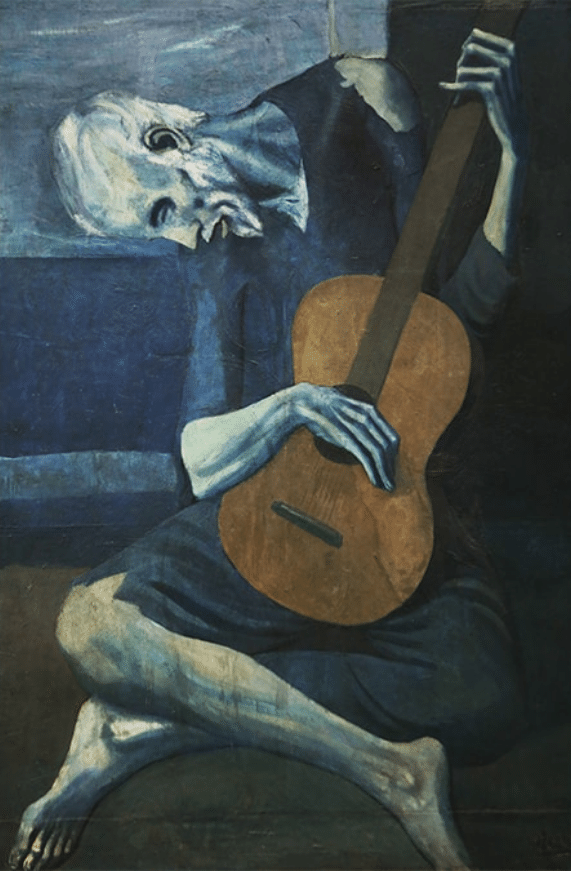
Artist: Pablo Picasso, Spanish painter during Blue Period
Picasso elongates the figure’s frail limbs and uses the guitar’s warm browns to contrast against the overwhelming blue.
This blind old man holds his guitar like it’s the last person who loves him, his skeletal fingers still trying to make music from a body that’s failing.
The guitar glows brown and gold against all that blue – the only warm thing left in his cold world. His elongated limbs make him look like he’s melting, dissolving into the poverty that surrounds him.
Picasso saw these broken musicians on Barcelona’s streets, blind beggars whose only value was the songs they could still remember, completely dependent on the mercy of strangers and their own fading abilities.
11. The Wounded Deer by Frida Kahlo (1946)
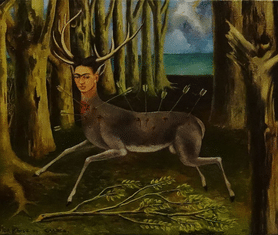
Artist: Frida Kahlo, Mexican surrealist painter
Kahlo turns personal suffering into surreal symbolism, placing her face on a deer’s body pierced by multiple arrows.
Arrows pierce her deer-body from every direction, but her human eyes stare back with fierce defiance; she refuses to look away or ask for pity.
This is chronic pain made visible: not one clean wound but dozens of small tortures that never stop, never heal, never give her peace.
The forest around her should be peaceful, but it’s become a torture chamber where every tree might hide another arrow. Kahlo painted this masterpiece of suffering after her body betrayed her one more time, turning hope into just another kind of pain.
12. Christina’s World by Andrew Wyeth (1948)
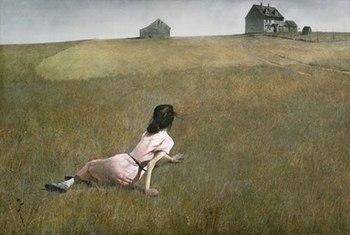
Artist: Andrew Wyeth, American realist painter
Wyeth’s hyperrealistic technique makes every blade of grass an obstacle, emphasizing the immense effort required for movement.
She drags herself across this endless field one painful inch at a time, her thin arms the only thing between her and total helplessness.
The farmhouse looks close, but it might as well be on the moon – every blade of grass is another obstacle, every slight rise in the ground a mountain to climb.
Her pink dress spreads around her like she’s drowning in fabric and earth and her own limitations.
Christina Olson refused to be carried, crawling around her Maine farm with such fierce independence that Wyeth couldn’t help but see her as a symbol of human determination.
13. The Scream by Edvard Munch (1893)
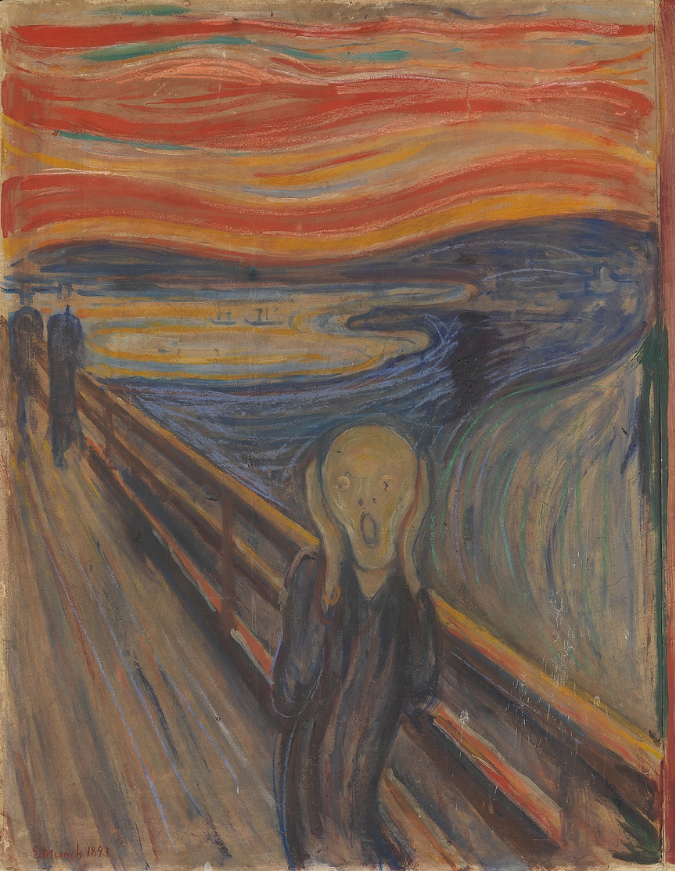
Artist: Edvard Munch, Norwegian Expressionist painter
Munch’s expressionist technique makes the landscape itself scream through swirling lines and blood-red skies.
The whole world is screaming and only this figure can hear it; hands pressed to skull, mouth open in silent horror at the cosmic joke of existence.
The sky bleeds red like an open wound while the landscape melts around them, reality itself warping under the weight of pure anxiety. This isn’t just fear; this is the moment when your mind breaks and shows you what the universe really looks like underneath all our comforting lies.
Munch painted this after a walk when he suddenly heard “the scream of nature” – that terrible moment when the whole world seemed to cry out in anguish.
14. The Desperate Man by Gustave Courbet (1843)
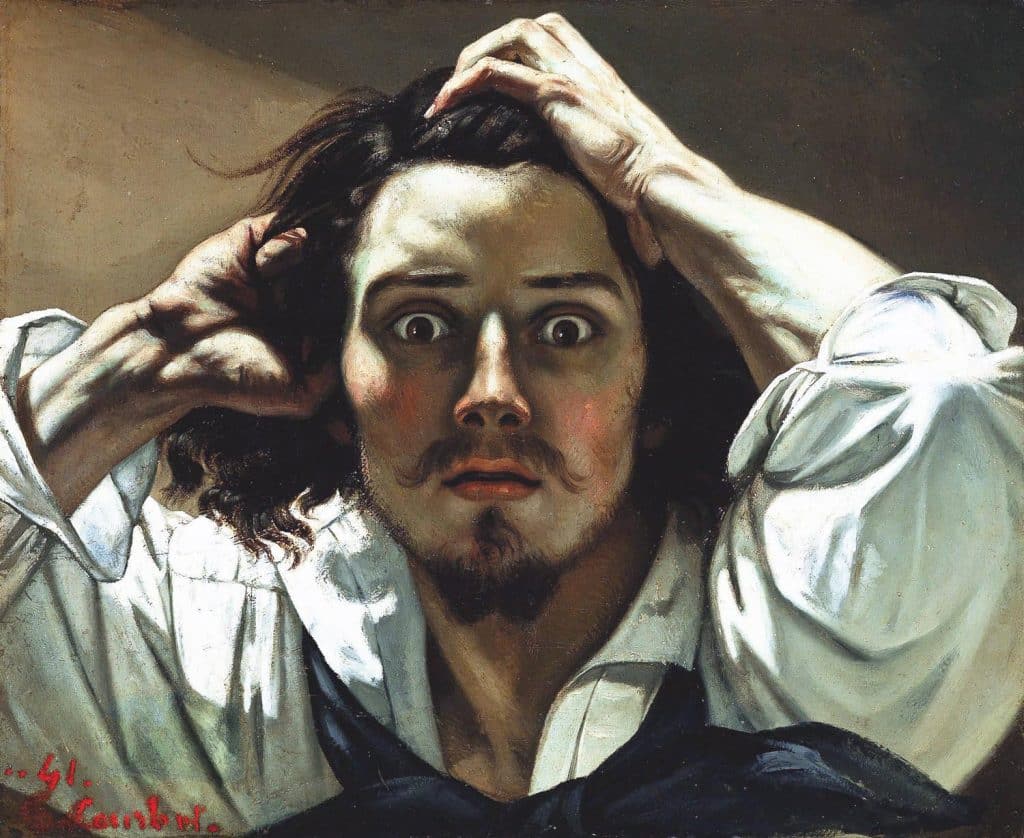
Artist: Gustave Courbet, French Realist painter
Courbet’s uncompromising realism strips away romantic notions of suffering to show raw psychological breakdown.
Wild eyes bulge from a face that’s seen too much, hands clawing at hair like he’s trying to rip the thoughts right out of his skull.
This is what a breakdown looks like without makeup or soft lighting – raw, ugly, terrifying in its honesty.
Courbet painted this self-portrait when critics were destroying his work and poverty was crushing his dreams, forcing him to look in the mirror and paint exactly what he saw: a man coming apart at the seams.
15. The Raft of Medusa by Théodore Géricault (1818-1819)

Artist: Théodore Géricault, French Romantic painter
Géricault’s monumental scale and dramatic composition force viewers to confront collective human suffering without escape.
Bodies pile on this makeshift raft like discarded dolls – some dead, some dying, a few still clinging to hope as the ocean tries to claim them all.
The living barely look human anymore after 13 days of hell, their skin burned by sun and salt, their eyes hollow with horrors they can never unsee.
The French naval frigate Medusa wrecked in 1816, abandoning 147 people on this death trap, where only 15 survived by eating the dead – a national scandal that exposed how the powerful sacrifice the powerless without a second thought.
The Impact of Sadness in Art
These masterpieces show that art serves as more than decoration – it’s a vital tool for emotional processing and human connection.
Through honest portrayals of suffering, these works bridge individual experience with universal truth.
Sad paintings transform private pain into shared understanding, reminding us that sadness is both difficult and necessary for complete human experience.
In a world that encourages hiding struggles, these paintings celebrate vulnerability.
Approach these works with openness – they don’t just show sadness, they teach us to be more authentically human.
Frequently Asked Questions
How Do Artists Convey Sadness Through Visual Elements?
Artists use muted color palettes, specific body language and postures, facial expressions, symbolic elements, and compositional techniques.
Are Sad Paintings Harmful to Mental Health?
These works provide catharsis, emotional validation, and connection with others who share similar experiences, often helping process difficult feelings constructively.
What Makes a Painting Feel Truly Sad Rather Than Just Dark?
True sadness in art comes from human connection – the way an artist captures genuine emotion through body language, facial expressions, and personal story.

